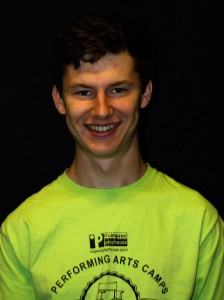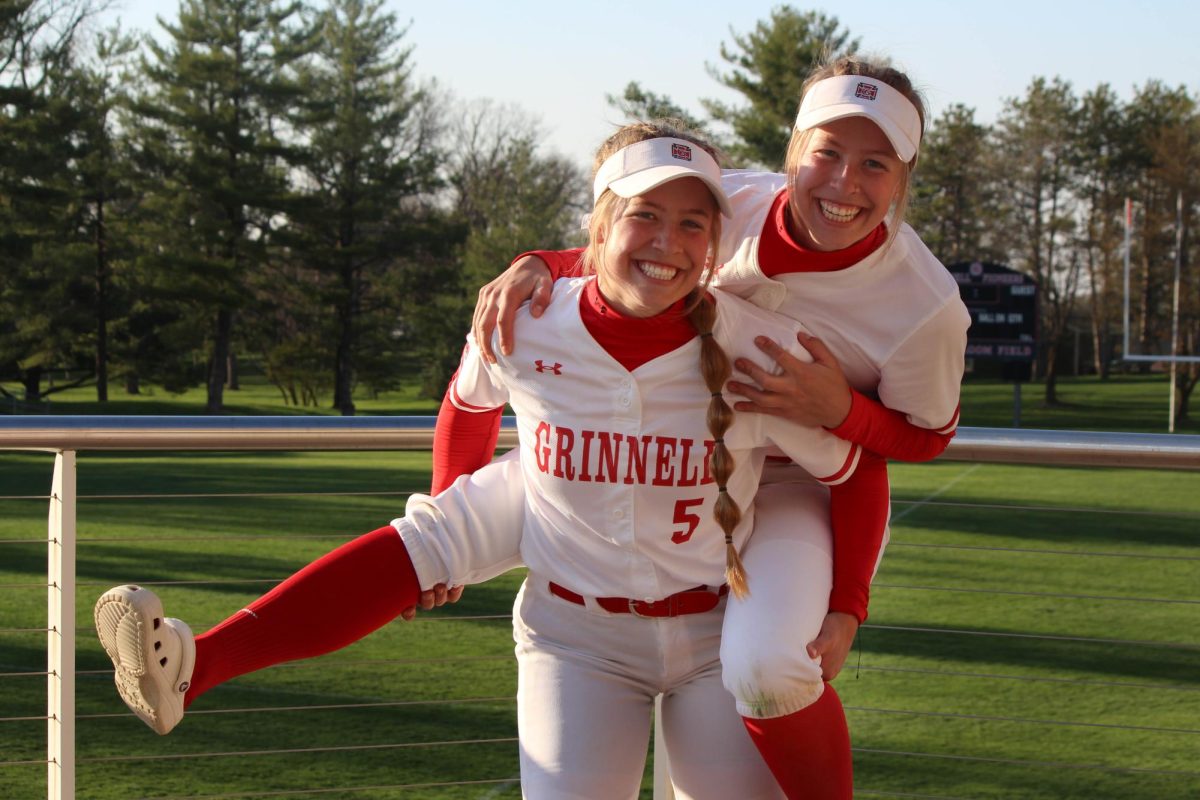
By Yishi Liang
liangyis@grinnell.edu
Matthew Terry ’15 spent the summer working with the Chicago division of one of the leading names in improvisational (improv) theatre—The Second City. This theatre group is where some of today’s biggest comedians, such as Tina Fey, Steve Carrell and Steven Colbert got their start. He recounted his summer experience and shared his general thoughts on improv theatre with the S&B.
How did you start working at The Second City?
I knew about [Second City] right when I started improv. I went to a show for the first time on my sixteenth birthday. It was a “Best Of” show and I liked it. Then two of my friends, Jessye and Jillian Mueller, just called me one day and asked if I wanted to be part of a comedy group they were in.
When did your interest in improv start?
I started taking classes when I was eleven. I actually signed up for improv kind of on a whim. I didn’t have anything to do one summer, and people said to me, ‘oh, you like musical theatre? Why don’t you try this out?’ And I really liked it, so I kept doing it in middle school. I was in a teen ensemble in high school called the Improv Playhouse.
What is the format for the shows you’ve performed?
Different places have different philosophies on how to do improv. There are so many different games and forms. For Second City, we try to mimic an episode of Masterpiece Theater so it would depend on whether we got Contemporary, Mystery or Classic. We ask the audience by saying something like ‘oh welcome, what genre would you like?’ A lot of times, we do three two-person scenes. Then we have a death where the lights go out and someone screams. And it’s pretty much free format from that until we reach a conclusion.
What’s your favorite genre to perform?
The one that worked the best was Classics. It was just easier to focus on the relationships than the form as much. Also with Classics, there are more easily identifiable plot devices, like marriage, inheritance, power struggle between the upper and lower class and stuff like that. There’s just a lot more stuff for us to draw on.
What is your goal going into the show?
We want to have a lot of scenes, and the person who wants to start the next scene would just step on, maybe even sweep the stage, like run across and start the scene and someone else would join. And that’s all improvised. It helps with practice to know when a scene is nearing the end and to get the pacing of the show. We know from the goal of the show that we don’t want to cut out after every two lines. We want grounded two person scenes, especially in the beginning because it sets up the whole piece. We’ve found that it’s really important to have longer, maybe five, six minute scenes.
What would you say were your best and worst performance experiences?
I would have to say the best experience was with Classics. In improv, there are a lot of times when you’ll make mistakes or someone will say something that doesn’t make sense. In the beginning of this show, I was a character that was very rugged and stiff and had a very strange constricted voice. I was in a conflict with another guy, and I was trying to woo all the daughters of the family to get into the family. But eventually, I came back on stage just as someone said that I was dead. So then I became a zombie, and I spent the rest of the show as a zombie. That was a lot fun, and the audience really liked it.
The worst experience was when we got Contemporary. We just had less understanding of what we wanted from that. While it worked fine, I think the audience and ourselves enjoy plots that continue themselves. The Contemporary form is a lot of different scenes that are vaguely inspired by each other. They’re supposed to be very artsy. We talked about cigarette smoke drifting through a window and then it lands on a train track and that’s where that scene starts. It just wasn’t as grounded or focused as the other plays.
Are you a part of an improv group at Grinnell?
I’m actually starting one on campus. We’re going to come up with a name after the ensemble is formed.
How many people are usually on an ensemble?
It really depends on what you’re going for. There are Harold teams at IU that are twelve or thirteen people. And then there’s TJ and Dave, which is probably the most famous improv group right now, and it’s two people. I’ve also seen solo improv, which sounds really difficult. There’s definitely a different feel to that.
What was performing with the ensemble from this summer like?
It was just exciting hanging around people who are taking this for a hobby and kind of seeing what my future would look like if I take a similar path. It was satisfying but it was also midnight and everyone’s really tired. And we practiced like three or four weeks beforehand about once or twice a week for three hours. But it was also really exciting.
Finally, what advice would you have for someone who wanted to get into improv?
Join my team! Improv is all about reacting. Performances are really important for getting better. It’s tough because even though there are practices that you can do by yourself, and they are important, you need a team to run scenes with. I guess my suggestion would be to be part of a team. This is my strategy going forward: read the books, then just be attentive and pay attention to each scene, take classes when you can, over break maybe. But then again, I live in Chicago so it’s a lot easier.




























































